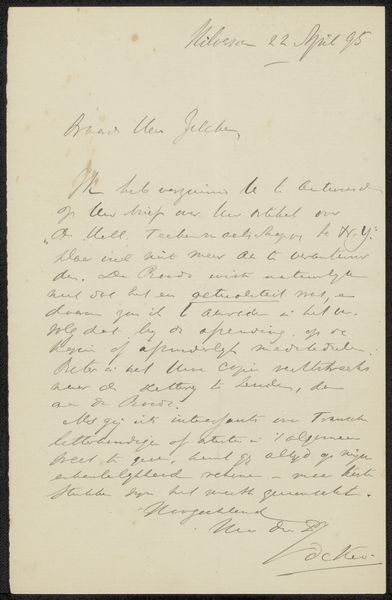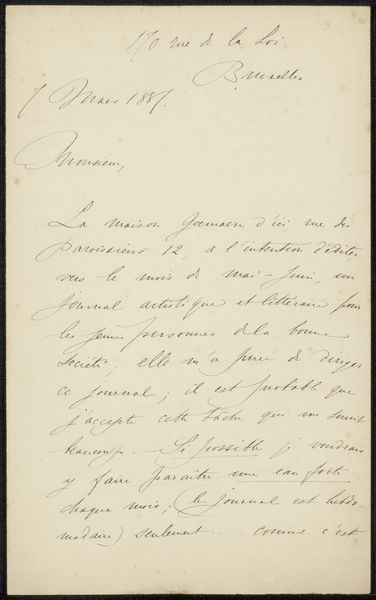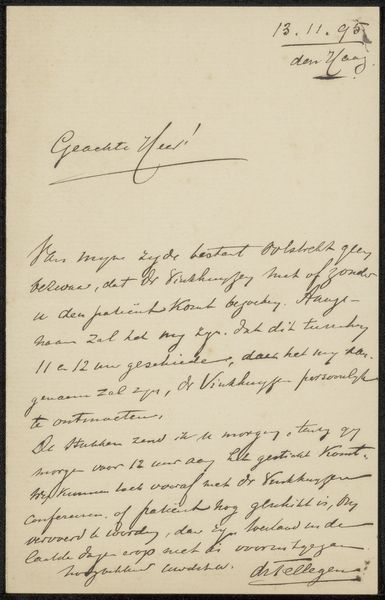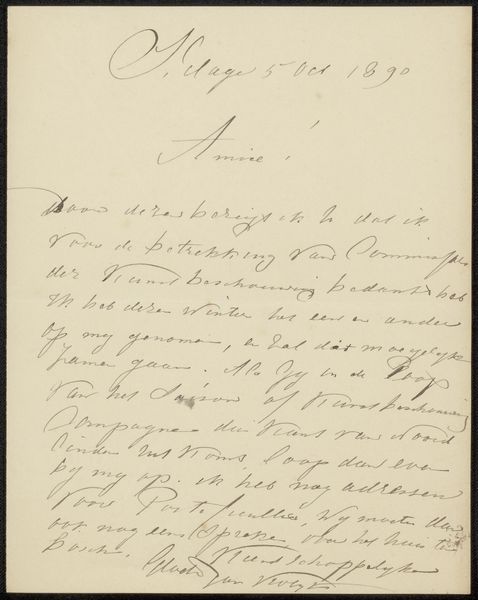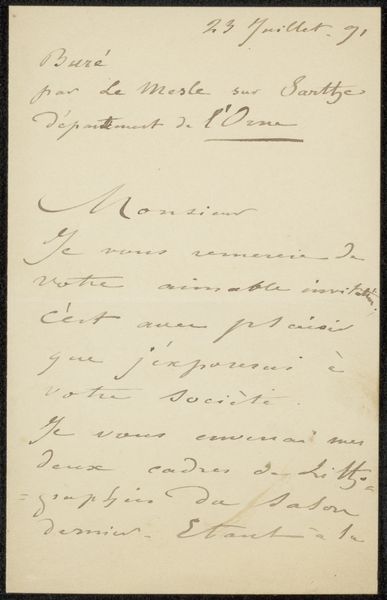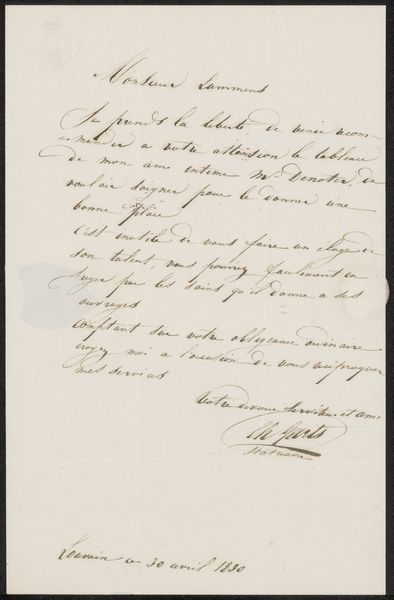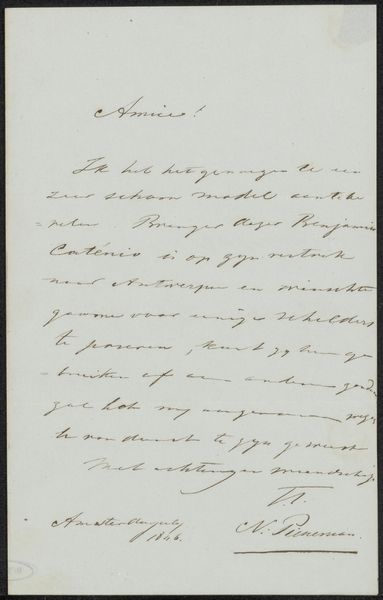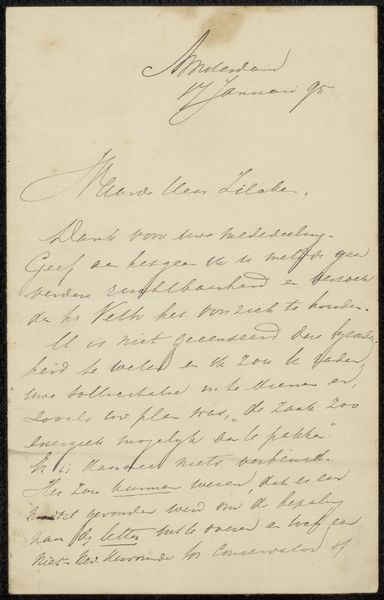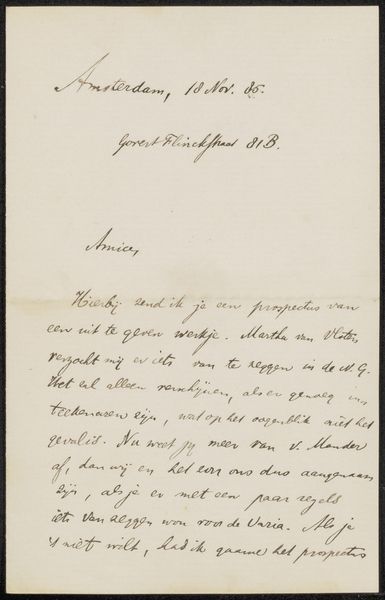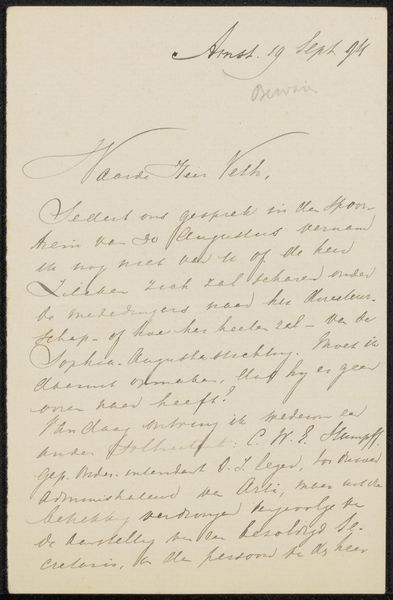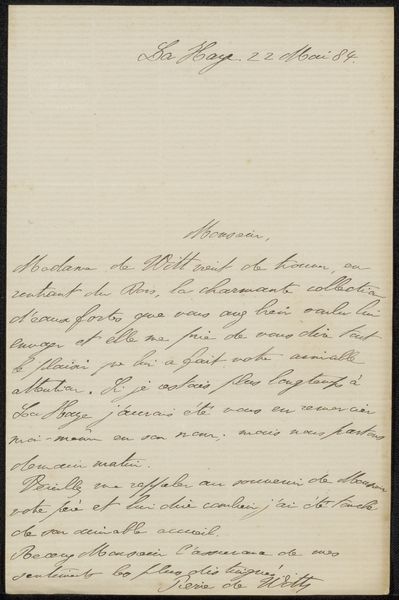
drawing, paper, ink, pen
#
drawing
#
ink drawing
#
pen sketch
#
paper
#
ink
#
pen work
#
pen
#
calligraphy
Copyright: Rijks Museum: Open Domain
Curator: This work here at the Rijksmuseum, “Brief aan Frans Buffa en Zonen,” is attributed to Louis Apol and thought to have been made around 1887. It’s ink on paper, a beautiful example of the artist's hand in written form. Editor: My first impression is one of intimacy and perhaps slight desperation. The handwriting, while elegant, feels rushed, almost urgent. Curator: Yes, you see that inherent emotional weight carried by handwriting itself, which remains one of the most profoundly human visual signifiers. The act of writing, then as now, binds the writer's intention with a physical trace. We can almost imagine Apol's frame of mind as he formed each stroke. Editor: Exactly. Given that Frans Buffa en Zonen was a prominent art dealership, one has to wonder about the context of this letter. Was it a request for representation? Perhaps it was a note related to money or perhaps a pressing matter affecting his ability to create art? The contents point towards that direction, and if one carefully considers the circumstances affecting Apol during his life and career, a complex picture starts to emerge. Curator: The script itself becomes symbolic. Notice how the looping ascenders and descenders give a rhythm to the text. Consider too how certain words are emphasized through heavier ink strokes – visual cues that underscore their importance. What I think we might be observing are symbols of his feelings woven through each gesture of his writing. Editor: It’s so revealing how the physicality of the artist is still here. I wonder about accessibility, too. Whose stories do our museums choose to tell? And how do we make sure these collections can reveal themselves as intersectional resources that connect to contemporary lives and questions? Curator: It raises profound questions, certainly. The letter may initially seem like a simple missive, but under consideration, it provides such insight into the artist’s life and what might have been of concern at that time. Editor: For me, looking at it with the sensitivity of human contact makes art that more important in public collections, revealing the real conditions behind our inherited legacies.
Comments
No comments
Be the first to comment and join the conversation on the ultimate creative platform.

